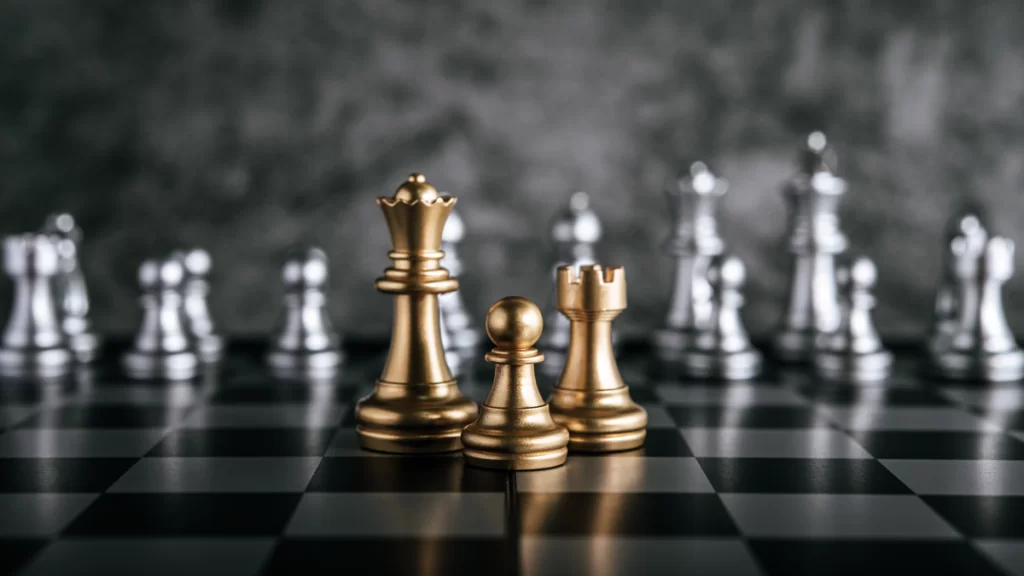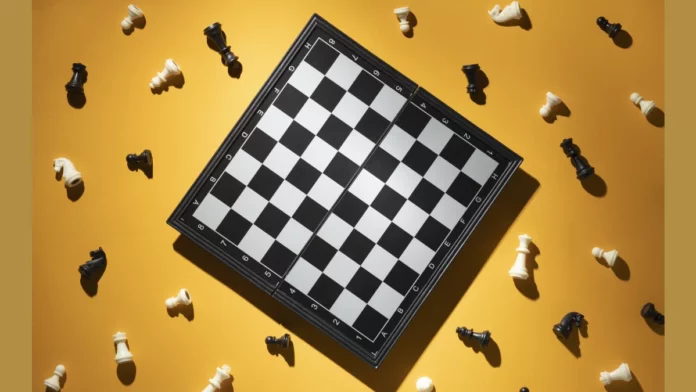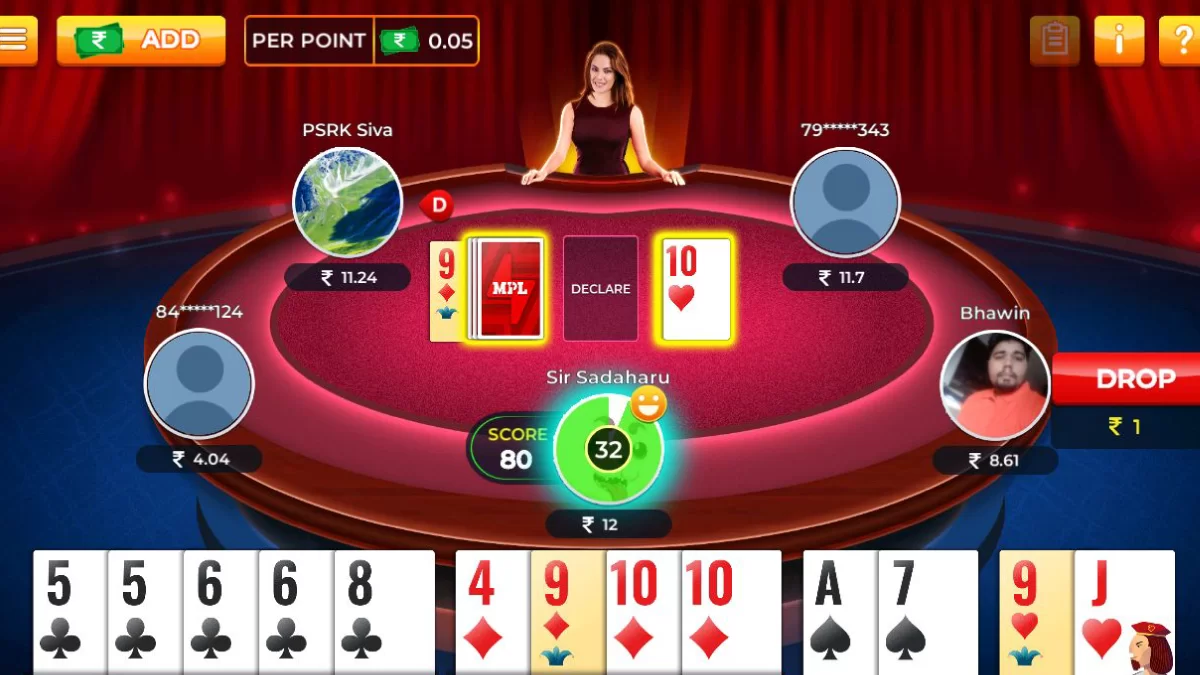What are Chessboards?
A chessboard is a type of gameboard used for playing the game of chess. The chess pieces and pawns are placed on the chessboard. These are typically square-shaped, with squares of two colours in an alternating pattern. Chess is most often played on a surface. However, a physical board is not always a requirement to play.
Different colour combinations are used for boards made from various materials such as wood, vinyl, plastic, or silicone. Popular dark-light combinations on a chessboard include black & white, alongside green, blue, or brown with cream or buff. You must know already that wooden boards are usually used in high-level games, while vinyl, plastic, and cardboard are the standard in less significant tournaments or matches and home use.
In western chess, the chess board is square in shape, with its side divided into eight parts, resulting in 64 squares. The total number of squares on different variants ranges from 9 to 112. Each individual square on the board is identifiable using chess notations – numeric, descriptive, or algebraic. In the case of two-dimensional boards, we call each vertical column of squares a file. Each horizontal row of squares is referred to as a rank. Each slanting line of squares of the same colour is known as a diagonal.
Want to play a game a chess? Read the rules of chess game and start your online chess journey today!
What do Chess Boards Represent?

Chess, as a game, has been represented in the field of the arts since its origin in Asia. Chessboards were considered to possess artistic value, made out of noble, expensive materials such as ivory and ebony, and in big sizes. Early on, many such pieces were offered to churches as relics. Owing to its simple geometry, the grid you see on the chessboard grid is commonly used in arithmetical puzzles or puzzles totally unrelated to chess. This instance includes the mutilated chessboard problem, the wheat and chessboard problem, and the angel problem.
Chess was known to be played several centuries ago in Persia, India, and China. Apparently, in the 8th century, armies of Arabs called Moors went on a Persian invasion. The Moors picked up Chess from the Persians. Later on, the Moors invaded Spain and, in the process, introduced it to the Spanish. From there, chess became a sensation and spread all across Europe.
Europeans gave chess pieces the names we know today due to difficulty pronouncing the original Persian names of chess pieces. This led to a modernization of the game based on the culture and lifestyle of the Europeans. It was a vivid reflection of life at that point – people ranking themselves based on positions of power – one that may not entirely make sense in the modern era.
Understanding the Chess Board: All the Chess Piece Names and Moves to Know
Chess Pieces in Standard Chess Sets
A standard chess set comprises 32 pieces, 16 on each side. These pieces are often called chessmen, while some experienced players also use the term “material”. The rules of chess determine how each piece is positioned, how each piece moves across the board and how many squares, and if any special moves are allowed.
Here are the various categories of chess pieces, along with their movement and capturing capabilities:
1. The Pawn
There are eight pawn pieces given to each player. Pawns are the lowest-value pieces on the chessboard. How the pawns are arranged on a chessboard is known as the “pawn structure”. As the first move, a pawn is permitted to move forward one or two spaces. On every following turn, a pawn can only move one space.
Pawns can capture opponent pieces only while moving forward and diagonally, either to the right or the left. The en passant capture can only happen instantly after a pawn makes a move of two squares from its starting square, and an opposing pawn could have captured it had it moved just one square. A pawn can get promoted to any piece except for the king if it can fully make it to the other side of the board.
2. The Knight
Knights, alongside bishops, constitute minor pieces. The knight has special movement rules in a game of chess. The power of the knight to skip over other pieces makes it extremely useful and valuable. This is especially the case in games where the centre of the board is walled by pawns that hinder the movement of other pieces.
There are two knights per side in a game of chess. Knights in a chess game have greater importance than pawns but less than bishops, queens, or kings. The purpose of the knight is to protect the more critical pieces on the chessboard.
Always remember that
- The knight is the sole piece allowed to jump over other pieces as a regular move.
- The knight must always move in the shape of an “L”: two spaces in one direction, followed by one space perpendicular, or vice versa.
3. The Bishop
Similar to the knight, the bishop is regarded as a minor piece. In a diagonal direction, the bishop may move any number of pieces. This implies that a player’s bishop will remain on the same colour that it starts always.
In the early days, the bishop was added to the game as a representative of the church. The church was a very powerful entity in medieval times. So, it is no wonder that a part of the culture made its way into the game in those times. A bishop is a designation given to a priest in the Catholic church who had climbed the ladder of power into a higher, more powerful position. In chess, two bishops are present on each side.
4. The Rook
Each side starts with two rooks, one on the kingside and one on the queenside. All four rooks position themselves at the corners of the chessboard. A rook is allowed to along either files or ranks (i.e. vertically or horizontally) any number of occupied spaces in each move.
Like every other piece except for the knight, the rook moves through occupied squares and captures an opponent piece by occupying its space. Rooks are considered major pieces (like the queen) and can move as many squares when other pieces don’t block them.
5. The Queen
The queen is undoubtedly the most valuable piece on the chessboard and a significant component in numerous chess strategies. The queen can move through as many unoccupied squares as it wants in any direction— diagonally, horizontally, or vertically. In simple terms, the queen can combine the moves of the bishop and the rook, making it the key piece in any game.
In a game of chess, one queen is allotted to each side. Players sometimes fail to realize that queens often held a powerful yet uncertain position during medieval times. The king solicited her advice in many matters related to ruling the kingdom and defending it. Symbolically, one can say that’s the role of the queen on a chessboard.
6. The King
As the most crucial piece on the chessboard, most chess strategies involve finding methods to secure the king while trying to capture your opponent’s. The king may move in any direction but just one square at a time. While it seems to make the king a versatile piece, there’s an exception: The king cannot move into a square that is being attacked by an opponent piece (or the king cannot position itself in check).
Also, a king can never be adjacently placed next to another king. While defending the king is the core strategy, the piece can also prove to be an attacking force during the game’s final stages. Checkmate signals the end of a game; it means the king has been placed in no check with no movements left. Technically speaking, the king is the only piece that’s never captured in a game as it ends the moment a checkmate declaration is made.
Other Important Terms in Chess
• Stalemate: Stalemate happens in a game when one of the players isn’t in check but cannot make any legal moves.
• Touch Move: According to the rule, you need to move a piece if you touch a piece. Also, if you let go of a piece, you should leave it there, and if you purposely displace an opponent’s piece, you need to take it.
• Castle: To move the king two squares towards an unmoved rook, then follow that up by moving the rook to the square the king crossed.
• Endgame: The (final) part of the game where the king has to come out and attack.
• Exchange: To trade pieces with your opponent, usually of the same value.
Ready to try an online version of chess instead of the traditional version? Click here. Before you start playing chess online, you must know the basics of chess openings.
History and Evolution of Chessboards
Ancient history has witnessed board games as part of popular culture, with some of the oldest records located in Egyptian tombs as early as 3100 BC. The original version of chess emerged in India around the 6th century during the Gupta dynasty’s rule, and it was known as chaturanga, played on the same board as Ashtapada. This particular board was monochromatic. It was segregated into eight rows by eight columns with special marks in the first, fourth, fifth, and eighth squares of the a-,d-,e-, and h- columns, which had a purpose in Ashtapada but not in chaturanga.
After the board’s layout and structure made their way into ancient Persia, it was adapted to suit its new variants, with additional rows and columns. Tamerlane chess, a common variant at the time, even had eleven columns by ten rows, with two extra squares to the right of the player’s second row (known as citadels) serving a special function in the game.
When chess arrived in Europe in the 10th century, the chessboard got its hallmark chequered pattern used at that point in a game called draughts, which was played on a smaller 5×5 board. This pattern upgrade proved majorly useful for diagonal movements, highlighted by the continual sequence of same-coloured squares, enabling the movement of the queen and the bishop, which were recently added.
Boards and Variants of Chess
Since several variants of the game were established, chessboards can be found in a wide variety of sizes. In 1617, Pietro Carrera came up with a variant called Carrera’s Chess, using a 10×8 board, which was later used in other variants. Boards with different sizes (10×10) are used in Omega Chess and Grand Chess. On the other hand, Los Alamos chess requires a smaller chessboard with 36 squares.
The Japanese and Korean variants – Shogi and Janggi – respectively, also feature different chessboard sizes. While the former uses a 9×9 board, the latter uses an 8×9 board. Some varieties also use more than a single chessboard for various reasons. Bughouse, Alice, and Raumschach variants often use multiple chessboards.
Read More: Origin of the Chess game
Understanding the Point Values of Chess Pieces
Before planning your moves and strategies, you should understand the value of your pieces on the board. Each piece is assigned a specific numerical value based on its designated strength in pawns (for instance, a knight is worth three pawns while a rook is worth five).
- Pawn: worth 1 point (or pawn)
- Knight: worth 3 points
- Bishop: worth 3 points
- Rook: worth 5 points
- Queen: worth 9 points
Having a clear idea of the value of your material helps you evaluate if one piece is worth losing in order to capture another. Conventionally speaking, the player with more high-value pieces available in a game possesses the advantage over his opponent.
If you wish to play an online version of the game, try MPL Chess.










